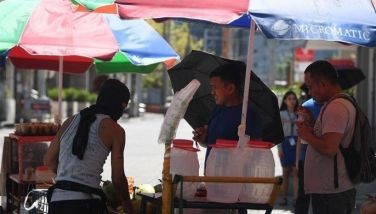Leyte island now Phl’s ‘disaster capital’ – studies
LOS BANOS, Laguna, Philippines – Has the island of Leyte become the disaster capital of the Philippines?
Composed of the provinces of Leyte and Southern Leyte, the island was the most hard-hit when Super Typhoon Yolanda barreled into the Visayas region, killing more than 6,000 people and laying waste to the landscape.
Leyte’s capital Tacloban City absorbed the fury of the storm with more than 90 percent of the once bustling city devastated.
Before Yolanda battered the country on Nov. 8, a research project of the Baybay City, Leyte-based Visayas State University (VSU) recorded that Leyte island had the “worst landslide history in the Philippines.â€
Another study done by the Tacloban-based Eastern Visayas State University (EVSU) showed Tacloban is “disaster prone.â€
Over the past two decades, VSU’s principal researcher Beatriz Jadina said more than 6,000 people died in catastrophic calamities that hit Leyte and Southern Leyte.
Jadina completed the study before the 7.2 magnitude earthquake shook Bohol and neighboring islands last Oct. 15 and before Yolanda cut a wide swath of destruction in many Visayan islands the next month.
Jadina’s study results were published by the Philippine government-hosted Southeast Asian Ministers of Education Organization-Regional Center for Graduate Study and Research in Agriculture (SEAMEO-SEARCA).
SEARCA is one of the 21 regional centers of SEAMEO, an inter-government treaty body that promotes cooperation among Southeast Asian nations in the fields of education, science and culture. The center is based in the University of the Philippines Los Baños (UPLB).
A massive landslide occurred in Ormoc City in November 1991, which killed more than 5,000 people. The heavy rainfall that triggered the landslides in the city was the highest in 100 years, according to the Department of Environment and Natural Resources (DENR).
Another massive landslide took place in Barangay Guinsaugon, St. Bernard, Southern Leyte on Dec. 17, 2006, during which more than 1,000 people perished.
On Dec. 17, 2011, another landslide occurred in St. Bernard, killing five people.
About 200 people died in an earlier landslide on Panaon Island, Southern Leyte on Dec. 19, 2003.
Earthquakes are also common to the island since the Philippine Fault that runs from north to south of the country passes through the center of Leyte and Southern Leyte, Jadina said.
“It is significant to note the occurrence of two earthquakes on the day of the Guinsaugon landslide,†she pointed out.
In the EVSU study, Tacloban has been described as a city ensconced in a “ring of fire,†referring to a region encircling the Pacific where volcanic eruptions, earthquakes and other natural disasters occur with regularity.
From 1901-2000, the Belgium-based Center for Research on the Epidemiology of Disasters said the Philippines suffered the worst combination of earthquakes, volcanic eruptions and floods.
Tacloban City can exemplify the Philippine scenario, the EVSU study said, where its results were highlighted by the Los Baños-based Philippine Council for Agriculture, Aquatic and Natural Resources Research and Development.
The research identified and mapped Tacloban City’s disaster-prone areas, specifically disaster, hazard and vulnerability maps for typhoons, floods and fires.
The flood disaster map showed areas along shores, rivers and swamps where floods regularly happened.
The study also noted that among Tacloban’s 138 barangays, almost half have experienced fire disasters caused by exploding gas tanks, faulty electrical wiring, children playing with matches, unattended lit candles and firewood left burning.
- Latest
- Trending






























